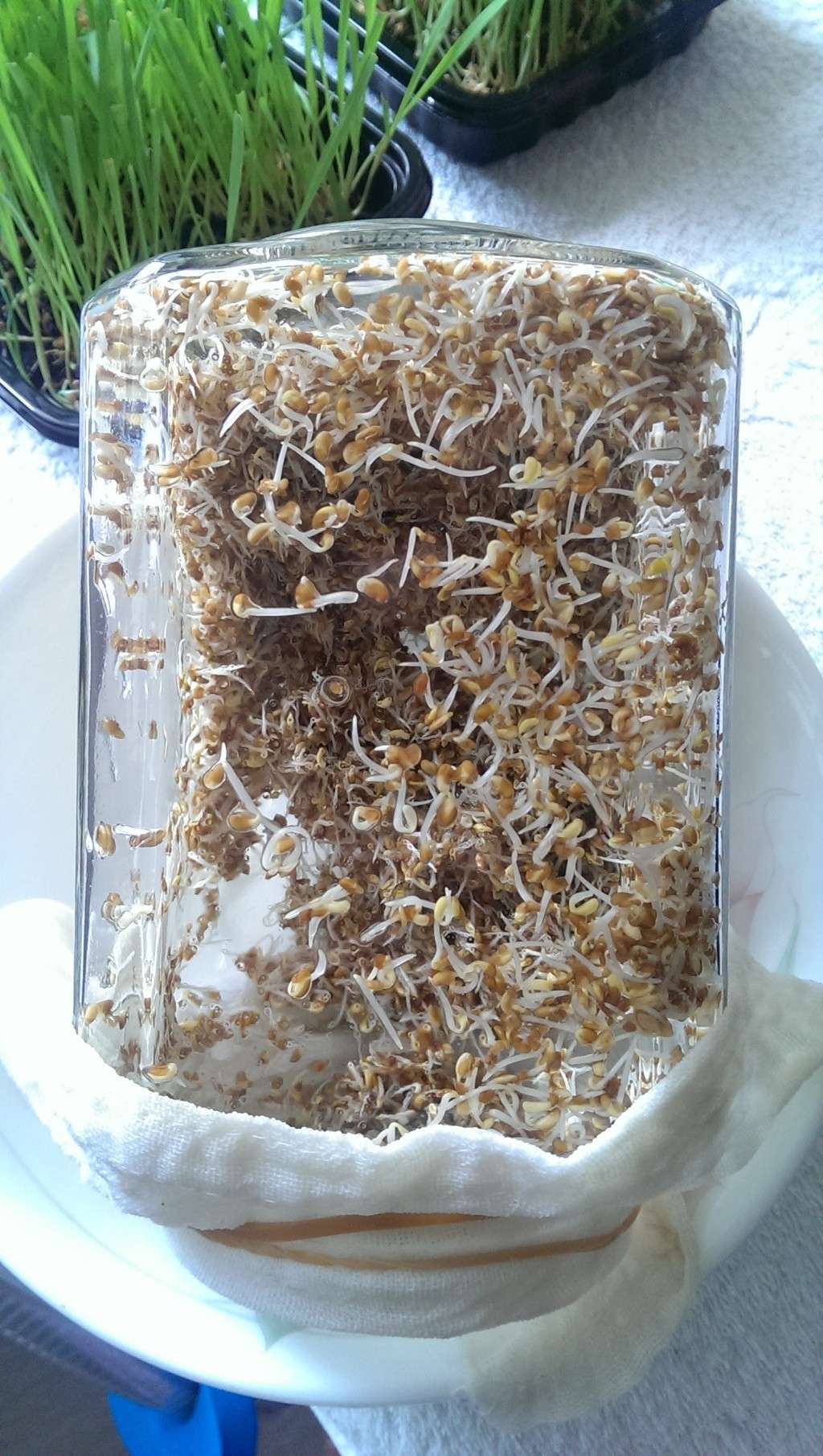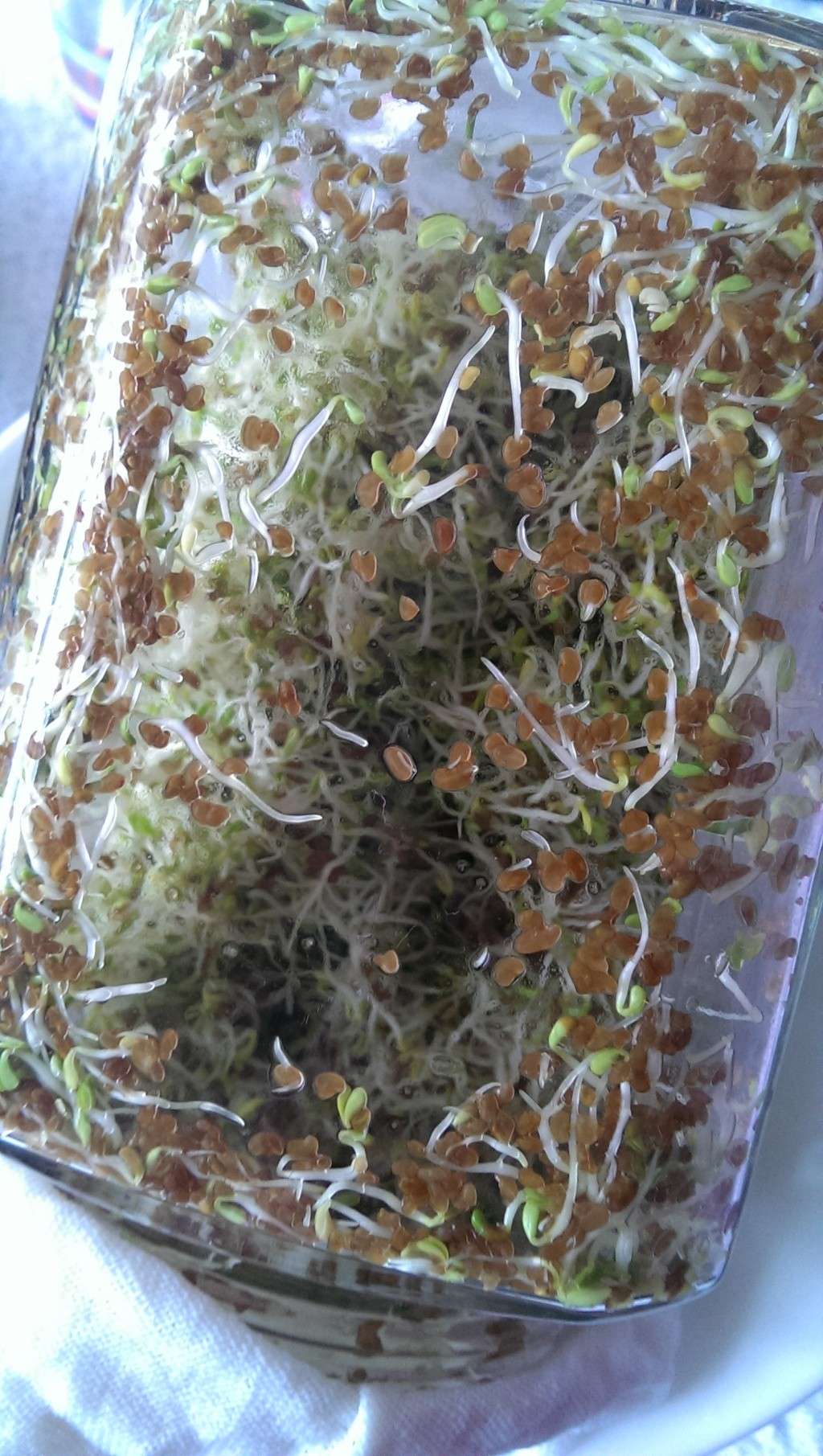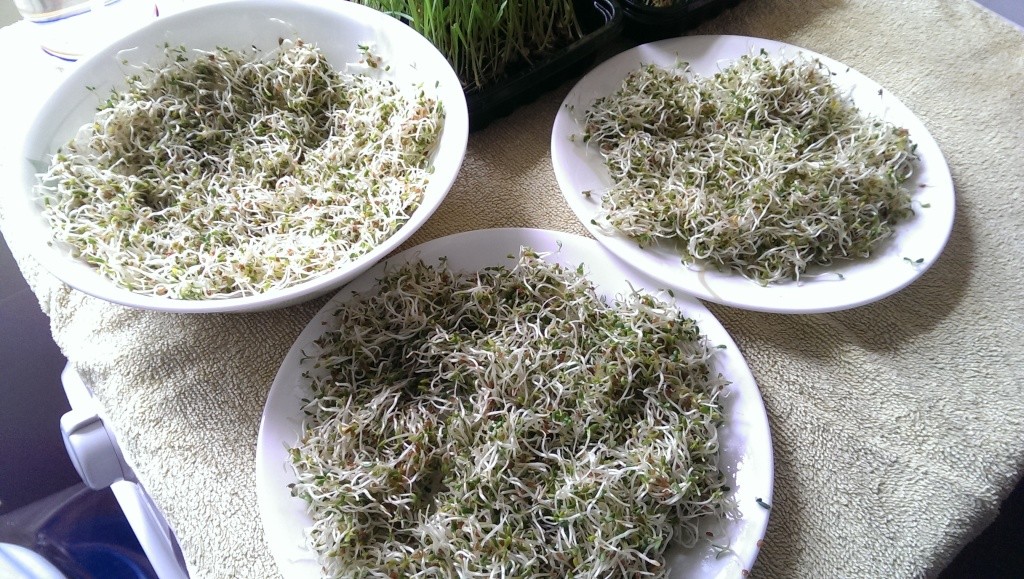I managed to source out a local place where they sell seeds in packets of 1 kg. It's super cheap. On their site, I also saw that they had alfalfa seeds, so I bought a big packet of 1kg for $25. A small packet of alfalfa sprouts (around 150 to 250g) in supermarkets will cost you around $2.50. Some are not even fresh. I figured that nothing much will go wrong considering that the big packet goes for so little and it can probably last me months.
Alfalfa sprouts are super easy to grow. If I say that growing wheat grass using soil is easy, then alfalfa beats it hands down, legs down. For this, you don't even need any soil. Since we're growing sprouts (think 'bean sprouts'), it'll be super fast and you can harvest in 3-4 days time.
 |
| The first 12 hours where the seeds are soaked in water and kept in the dark to germinate |
The method is really easy - you just soak one to two tablespoon of the seeds into water, germinate it in a dark place for 12 hours to 24 hours in a glass container covered with a filter cloth. After that, just add water into the container and drain it through the filter cloth. It'll not be totally dry - but that's the point. You want to keep the seeds moist but not drown them in water. Keep them in the dark until you see the first inkling of the leaves.
 |
| After 24 hours. The roots are out - they really grow very fast. |
Just keep repeating the watering and draining process, keeping them in the dark, until you see the first signs of the leaves. For me, I saw it somewhere between the 2nd and the 3rd day. Once you see the leaves, you can put them under indirect sunlight for the plants for them to make food.
 |
| 2nd day - Tiny leaves (still yellowish) started to grow |
 |
| 3rd day, the leaves are fully out. I put them in indirect sunlight around the 2nd-3rd day |
On the 4th day, the leaves turned a very beautiful dark green colour. You'll know when you can harvest it. I ate it straight off the jar - a very nutty, bean-sprouty taste. Reminds me of Vietnamese crusine or atas burger joints. More of the former. I can imagine putting these raw in some beef soup with rice noodles, very nice!
 |
| Just 1.5 tablespoons gave me some much harvest on the 4th day. This is easily more than 3 equivalent boxes found in supermarket |
 |
| A close up of the beautiful alfalfa sprouts. |
What's the health benefits of eating alfalfa sprouts? Here's a few that I googled:
1. Full of proteins. Each serving contains 3g of proteins. Vegan eat this for protein as opposed to meat.
2. Can ease chronic constipation and digestion problems
3. Cholesterol reduction abilities - it can reduce both total cholesterol and low density lipoprotein (the bad cholesterol) without affecting high density lipoprotein (the good cholesterol).
4. Reduces cholesterol plagues in heart arteries
5. Contains Vitamin B and K. Esp the latter. It is one of the most concentrated sources of Vitamin K found in nature.
I'm not sure if all are really true. Anyway, it taste good and is easy and cheap to grow, so what's there to lose?




0 comments :
Post a Comment